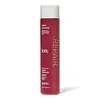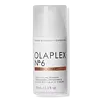What's inside
What's inside
 Key Ingredients
Key Ingredients

 Benefits
Benefits

 Concerns
Concerns

 Ingredients Side-by-side
Ingredients Side-by-side

Water
Skin ConditioningSodium Laureth Sulfate
CleansingCocamidopropyl Betaine
CleansingGlycol Distearate
EmollientPhenoxyethanol
PreservativeParfum
MaskingLaureth-4
EmulsifyingPolyquaternium-10
Sodium Chloride
MaskingSodium Benzoate
MaskingPolyquaternium-7
Ethylhexylglycerin
Skin ConditioningGuar Hydroxypropyltrimonium Chloride
Skin ConditioningLaureth-2
CleansingPEG/PPG-120/10 Trimethylolpropane Trioleate
Lactic Acid
BufferingLinalool
PerfumingDimethicone PEG-8 Meadowfoamate
EmollientTocopheryl Acetate
AntioxidantPanthenol
Skin ConditioningPropylene Glycol
HumectantHydrolyzed Quinoa
Skin ConditioningPotassium Sorbate
PreservativeWater, Sodium Laureth Sulfate, Cocamidopropyl Betaine, Glycol Distearate, Phenoxyethanol, Parfum, Laureth-4, Polyquaternium-10, Sodium Chloride, Sodium Benzoate, Polyquaternium-7, Ethylhexylglycerin, Guar Hydroxypropyltrimonium Chloride, Laureth-2, PEG/PPG-120/10 Trimethylolpropane Trioleate, Lactic Acid, Linalool, Dimethicone PEG-8 Meadowfoamate, Tocopheryl Acetate, Panthenol, Propylene Glycol, Hydrolyzed Quinoa, Potassium Sorbate
Water
Skin ConditioningCetearyl Alcohol
EmollientDimethicone
EmollientIsohexadecane
EmollientCoco-Caprylate
EmollientNeopentyl Glycol Diheptanoate
EmollientBehentrimonium Chloride
PreservativeIsododecane
EmollientPhenyl Trimethicone
Skin ConditioningPropanediol
SolventBis-Aminopropyl Diglycol Dimaleate
Skin ConditioningParfum
MaskingCetrimonium Chloride
AntimicrobialPhenoxyethanol
PreservativeGlyceryl Stearate
EmollientIsopropyl Alcohol
SolventHydroxyethylcellulose
Emulsion StabilisingHydroxypropyl Guar
Emulsion StabilisingSodium Stearoyl Lactylate
EmulsifyingHydroxypropyl Cyclodextrin
MaskingHexyl Cinnamal
PerfumingLimonene
PerfumingCitral
PerfumingHydrolyzed Vegetable Protein Pg-Propyl Silanetriol
Skin ConditioningDisodium EDTA
Linalool
PerfumingCitronellol
PerfumingIodopropynyl Butylcarbamate
PreservativeHydroxycitronellal
PerfumingEtidronic Acid
Tocopherol
AntioxidantGeraniol
PerfumingPotassium Sorbate
PreservativeHelianthus Annuus Seed Oil
EmollientPhytantriol
HumectantSodium Benzoate
MaskingPseudozyma Epicola/Camellia Sinensis Seed Oil Ferment Extract Filtrate
HumectantTocopheryl Acetate
AntioxidantVitis Vinifera Seed Oil
EmollientAloe Barbadensis Leaf Juice
Skin ConditioningPanthenol
Skin ConditioningCitric Acid
BufferingGigartina Stellata Extract
Skin ProtectingChondrus Crispus Extract
Skin ConditioningAscorbic Acid
AntioxidantCocos Nucifera Oil
MaskingWater, Cetearyl Alcohol, Dimethicone, Isohexadecane, Coco-Caprylate, Neopentyl Glycol Diheptanoate, Behentrimonium Chloride, Isododecane, Phenyl Trimethicone, Propanediol, Bis-Aminopropyl Diglycol Dimaleate, Parfum, Cetrimonium Chloride, Phenoxyethanol, Glyceryl Stearate, Isopropyl Alcohol, Hydroxyethylcellulose, Hydroxypropyl Guar, Sodium Stearoyl Lactylate, Hydroxypropyl Cyclodextrin, Hexyl Cinnamal, Limonene, Citral, Hydrolyzed Vegetable Protein Pg-Propyl Silanetriol, Disodium EDTA, Linalool, Citronellol, Iodopropynyl Butylcarbamate, Hydroxycitronellal, Etidronic Acid, Tocopherol, Geraniol, Potassium Sorbate, Helianthus Annuus Seed Oil, Phytantriol, Sodium Benzoate, Pseudozyma Epicola/Camellia Sinensis Seed Oil Ferment Extract Filtrate, Tocopheryl Acetate, Vitis Vinifera Seed Oil, Aloe Barbadensis Leaf Juice, Panthenol, Citric Acid, Gigartina Stellata Extract, Chondrus Crispus Extract, Ascorbic Acid, Cocos Nucifera Oil
 Reviews
Reviews

Ingredients Explained
These ingredients are found in both products.
Ingredients higher up in an ingredient list are typically present in a larger amount.
Linalool is a fragrance and helps add scent to products. It's derived from common plants such as cinnamon, mint, citrus, and lavender.
Like Limonene, this ingredient oxidizes when exposed to air. Oxidized linalool can cause allergies and skin sensitivity.
This ingredient has a scent that is floral, spicy tropical, and citrus-like.
Learn more about LinaloolPanthenol is a common ingredient that helps hydrate and soothe the skin. It is found naturally in our skin and hair.
There are two forms of panthenol: D and L.
D-panthenol is also known as dexpanthenol. Most cosmetics use dexpanthenol or a mixture of D and L-panthenol.
Panthenol is famous due to its ability to go deeper into the skin's layers. Using this ingredient has numerous pros (and no cons):
Like hyaluronic acid, panthenol is a humectant. Humectants are able to bind and hold large amounts of water to keep skin hydrated.
This ingredient works well for wound healing. It works by increasing tissue in the wound and helps close open wounds.
Once oxidized, panthenol converts to pantothenic acid. Panthothenic acid is found in all living cells.
This ingredient is also referred to as pro-vitamin B5.
Learn more about PanthenolParfum is a catch-all term for an ingredient or more that is used to give a scent to products.
Also called "fragrance", this ingredient can be a blend of hundreds of chemicals or plant oils. This means every product with "fragrance" or "parfum" in the ingredients list is a different mixture.
For instance, Habanolide is a proprietary trade name for a specific aroma chemical. When used as a fragrance ingredient in cosmetics, most aroma chemicals fall under the broad labeling category of “FRAGRANCE” or “PARFUM” according to EU and US regulations.
The term 'parfum' or 'fragrance' is not regulated in many countries. In many cases, it is up to the brand to define this term.
For instance, many brands choose to label themselves as "fragrance-free" because they are not using synthetic fragrances. However, their products may still contain ingredients such as essential oils that are considered a fragrance by INCI standards.
One example is Calendula flower extract. Calendula is an essential oil that still imparts a scent or 'fragrance'.
Depending on the blend, the ingredients in the mixture can cause allergies and sensitivities on the skin. Some ingredients that are known EU allergens include linalool and citronellol.
Parfum can also be used to mask or cover an unpleasant scent.
The bottom line is: not all fragrances/parfum/ingredients are created equally. If you are worried about fragrances, we recommend taking a closer look at an ingredient. And of course, we always recommend speaking with a professional.
Learn more about ParfumPhenoxyethanol is a preservative that has germicide, antimicrobial, and aromatic properties. Studies show that phenoxyethanol can prevent microbial growth. By itself, it has a scent that is similar to that of a rose.
It's often used in formulations along with Caprylyl Glycol to preserve the shelf life of products.
Potassium Sorbate is a preservative used to prevent yeast and mold in products. It is commonly found in both cosmetic and food products.
This ingredient comes from potassium salt derived from sorbic acid. Sorbic acid is a natural antibiotic and effective against fungus.
Both potassium sorbate and sorbic acid can be found in baked goods, cheeses, dried meats, dried fruit, ice cream, pickles, wine, yogurt, and more.
You'll often find this ingredient used with other preservatives.
Learn more about Potassium SorbateSodium Benzoate is a preservative. It's used in both cosmetic and food products to inhibit the growth of mold and bacteria. It is typically produced synthetically.
Both the US FDA and EU Health Committee have approved the use of sodium benzoate. In the US, levels of 0.1% (of the total product) are allowed.
Sodium benzoate works as a preservative by inhibiting the growth of bacteria inside of cells. It prevents the cell from fermenting a type of sugar using an enzyme called phosphofructokinase.
It is the salt of benzoic acid. Foods containing sodium benzoate include soda, salad dressings, condiments, fruit juices, wines, and snack foods.
Studies for using ascorbic acid and sodium benzoate in cosmetics are lacking, especially in skincare routines with multiple steps.
We always recommend speaking with a professional, such as a dermatologist, if you have any concerns.
Learn more about Sodium BenzoateTocopheryl Acetate is AKA Vitamin E. It is an antioxidant and protects your skin from free radicals. Free radicals damage the skin by breaking down collagen.
One study found using Tocopheryl Acetate with Vitamin C decreased the number of sunburned cells.
Tocopheryl Acetate is commonly found in both skincare and dietary supplements.
Learn more about Tocopheryl AcetateWater. It's the most common cosmetic ingredient of all. You'll usually see it at the top of ingredient lists, meaning that it makes up the largest part of the product.
So why is it so popular? Water most often acts as a solvent - this means that it helps dissolve other ingredients into the formulation.
You'll also recognize water as that liquid we all need to stay alive. If you see this, drink a glass of water. Stay hydrated!
Learn more about Water